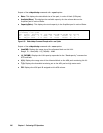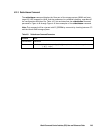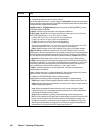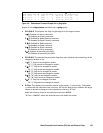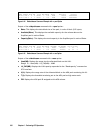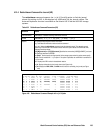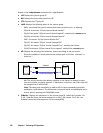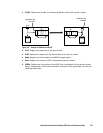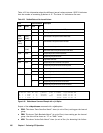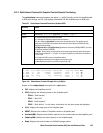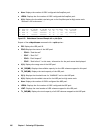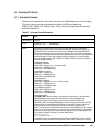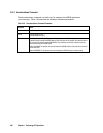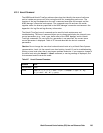
256 Chapter 4 Performing CCI Operations
Output of the raidqvchkscan command with -v jnl 0 option:
JID: Displays the journal group ID.
MU: Displays the mirror descriptions on UR.
CTG: Displays the CT group ID.
JNLS: Displays the following status in the journal group.
– SMPL: this means the journal volume which does not have a pair, or deleting.
– P(S)JNN: this means “P(S)vol Journal Normal Normal”.
– P(S)JNS this means “P(S)vol Journal Normal suspend” created with -nocsus option.
– P(S)JSN: this means “P(S)vol Journal Suspend Normal”.
–
PJNF: this means “P(S)vol Journal Normal Full”.
–
P(S)JSF: this means “P(S)vol Journal Suspend Full”.
–
P(S)JSE: this means “P(S)vol Journal Suspend Error” including link failure.
– P(S)JES this means “P(S)vol Journal Error suspend” created with -nocsus option.
AP: Displays the following two conditions (status) according to the pair status.
– Shows the number of active paths on the initiator port in UR links. ‘Unknown’ is
shown as ‘-’.
P-JNL
AP
S-JNL
AP
Control
Read Data/control
AM
– AM: The activity monitor that detects whether or not there is a request for data
from the initiator at regular intervals. If AM detects a time-out, the P-JNL state will
be changed from P-JNN to PJSE.
Note: The same path information is used for AP for three commands (pairvolchk,
pairdisplay, raidvchkscan). The differential is that pairvolchk and pairdisplay are to
show a special meaning with SSUS(SSWS) state.
Q-Marker: Displays the sequence # of the journal group ID, called the Q-marker. For
P-JNL, Q-Marker shows the latest sequence # on the P-JNL volume. For S-JNL, the
Q-Marker shows the latest sequence # of the cache(DFW).



